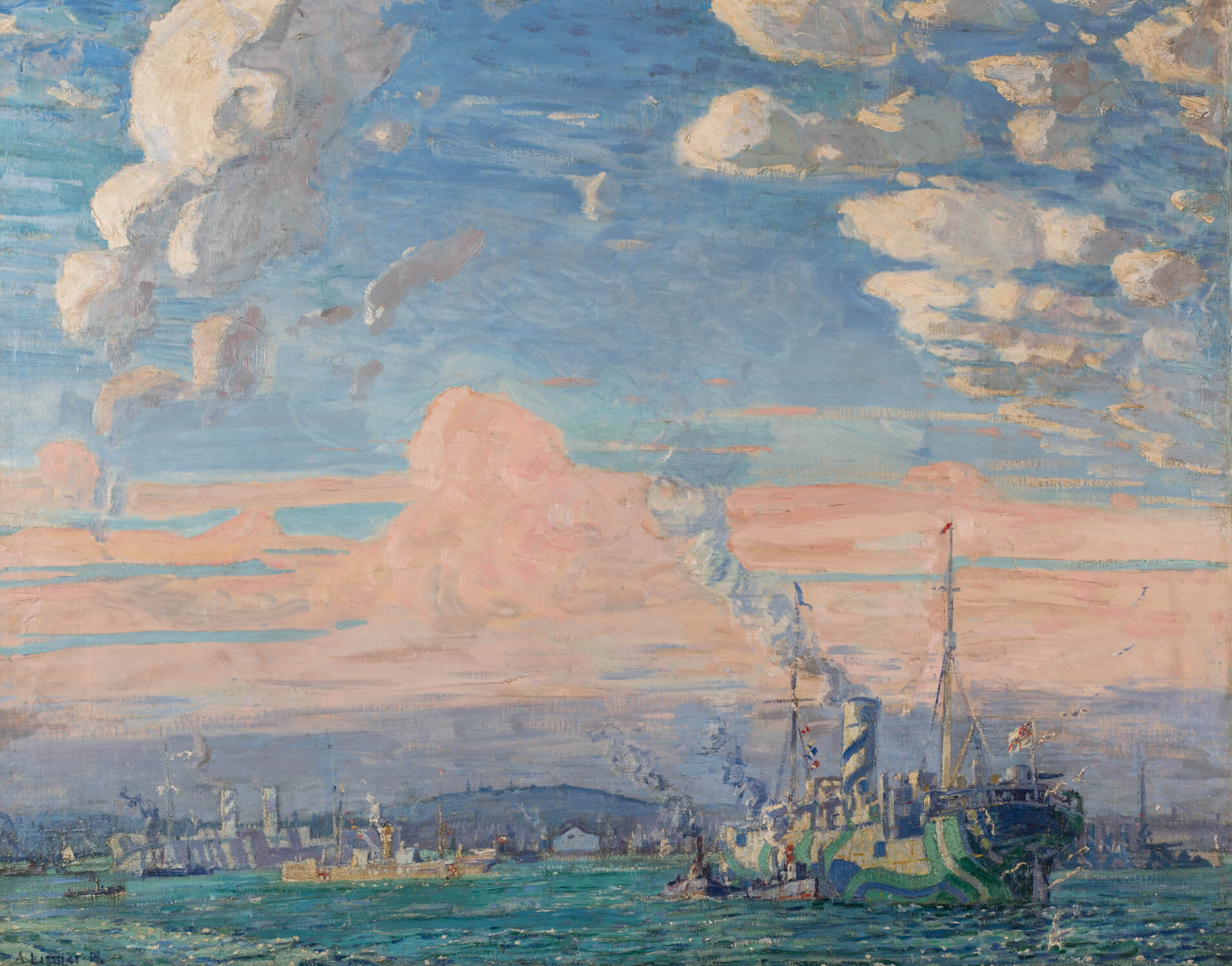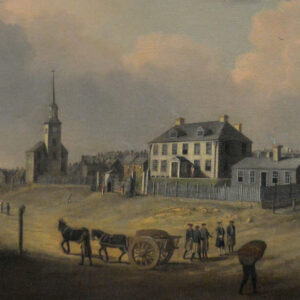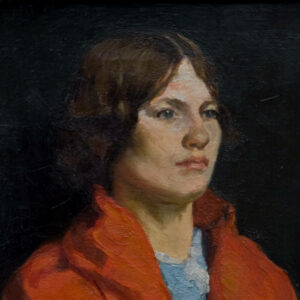Arthur Lismer (1885–1969)

Arthur Lismer, Halifax Harbour, Time of War, c.1917
Oil on canvas, conserved onto aluminum, 102.5 x 130 cm
Dalhousie Art Gallery, Halifax
The future Group of Seven member Arthur Lismer moved to Halifax in 1916 to assume the principalship of the Victoria School of Art and Design (VSAD). He inherited a school with just twelve pupils, but over his first year he was able to increase the school’s enrolment to fifty, and by the time he resigned, in 1919, the student body stood at 150. Just thirty-one when he became principal, Lismer brought energy and inventiveness to his tenure, creating new programs aimed at broadening the public reach of the art school, including Saturday morning art classes that he would later replicate at the Art Gallery of Toronto (now the Art Gallery of Ontario). In addition to his teaching and administrative duties, Lismer also assumed the curatorship of the Nova Scotia Museum of Fine Arts (NSMFA), which was housed at VSAD.
-
Arthur Lismer, Sorrow, 1917
Watercolour and gouache, 49.5 x 57.2 cm
University of Lethbridge Art Gallery -
Arthur Lismer, Sackville River, 1917
Oil on canvas, 77.2 x 92.4 cm
Art Gallery of Nova Scotia, Halifax -
Arthur Lismer, Convoy at Night, c.1917
Oil on canvas, 50 x 60.3 cm
Anna Leonowens Gallery Archives, NSCAD University, Halifax
Lismer served as an official war artist while in Halifax, and he concentrated on creating images of the convoys and the harbour defenses. After the Halifax Explosion on December 6, 1917, he produced several drawings for publication in the Canadian Courier magazine. Unfortunately, only one of the original drawings survives (Sorrow, 1917, in the collection of the University of Lethbridge). Before the explosion, Lismer’s works produced in Halifax were mostly landscapes, often with figures in tranquil, pastoral settings. Afterwards, there was “a dramatic shift,” with seascapes and harbour scenes predominating.
Lismer’s Post-Impressionism is on full view in Sackville River, 1917, a painting acquired by the NSMFA from an exhibition held to honour Lismer on his leaving VSAD. This painting shows how his style was evolving, and it is an early example of the increasing interest in the wild Canadian landscape. The painting is “one of very few Nova Scotia works in which Lismer evokes the idea of a ‘wilderness’ landscape painting—remote, pure, and elemental.”
Lismer grew tired of the constant battle for resources that marked his time at VSAD, and in the fall of 1919 he took a position at the Ontario School of Art (now OCAD University). Despite being brief, his time in Halifax was impactful. “His years in Halifax are extraordinarily important to his career,” Jeffrey Spalding (1951–2019) wrote, noting that by the time he returned to Halifax the young artist was well on his way to his mature style. Lismer’s impact on the city was no less telling: “In Arthur Lismer, the Directors of the VSAD found—and too soon lost—an artist, teacher, administrator and curator who remains without precedent and perhaps without equal in the School’s history.” Not just the school, of course. Lismer’s artistic example, his curatorial work at the NSMFA, and his tireless advocacy for artistic professionalism all left their mark on the art history of Halifax.

 About the Author
About the Author
 More Online Art Books
More Online Art Books
 Acknowledgements
Acknowledgements